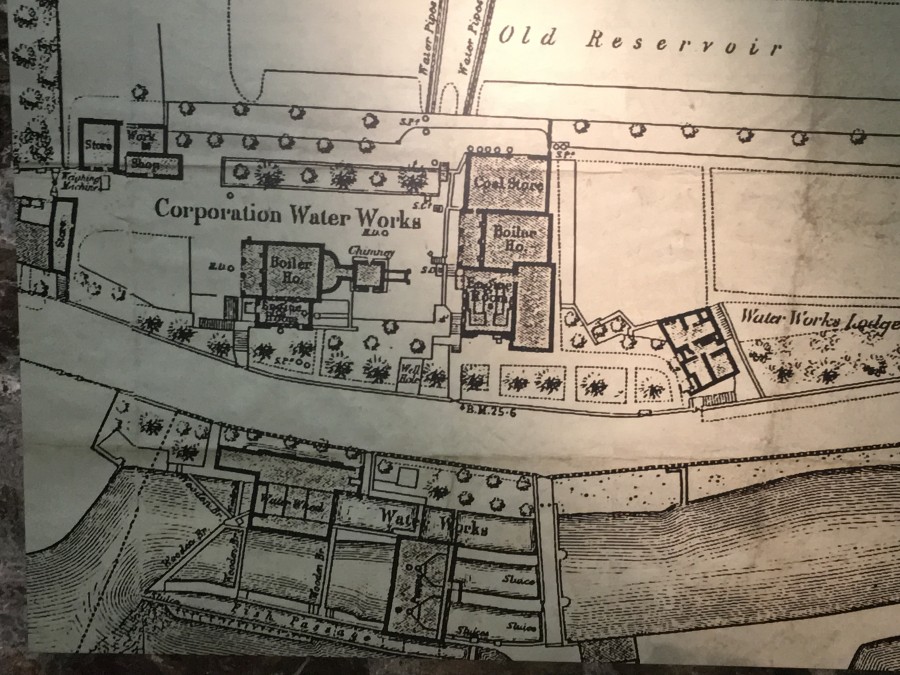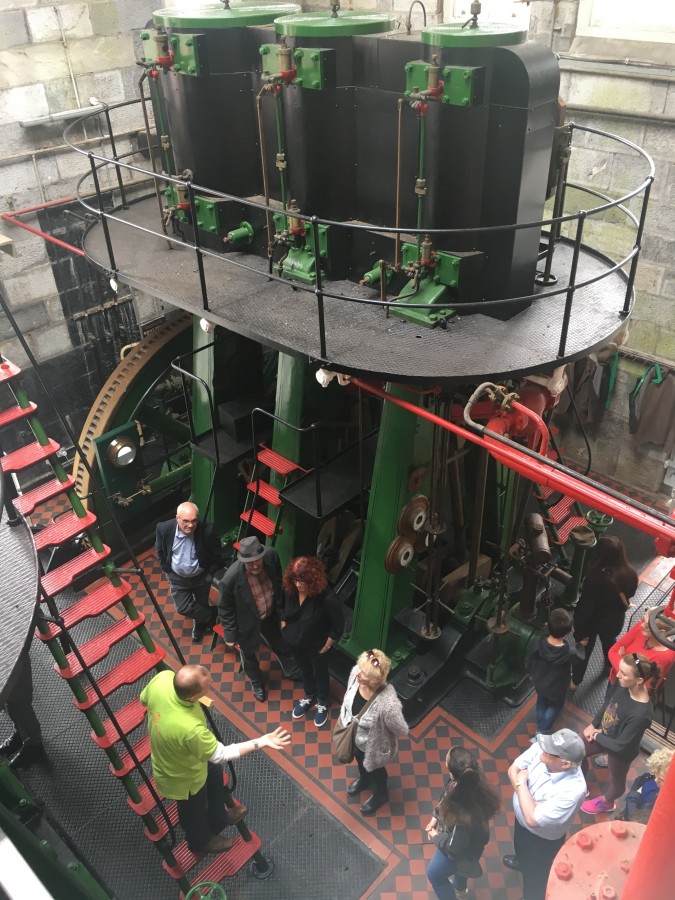
Kieran’s Our City, Our Town Article,
Cork Independent, 18 July 2019
Tales from 1919: The Work of the Waterworks
In the western corner of the Old Cork Waterworks on Lee Road lies a weighing scales for deliveries of coal. Coal came up a back cobbled laneway into the complex. One hundred years ago in mid-July 1919 Cork Corporation’s Waterworks committee met with councillors. The Resident Engineer Mr Michael O’Riordan reported that the coal contractor had just delivered about 240 tons of Lancashire coal from the Collins Green pit. After using some of it, he stopped delivery, finding it very difficult to keep up the steam pressure needed to drive the engine room. In his view it was the worst coal ever supplied to the pumping station. The contract was for the best double-screened Welsh Tredegar steam goal, and the contractor informed him that he could not get it due to shortage. Mr O’Riordan felt that the case should be brought before the Coal Controller, Dublin, to ask him to explain the railways in Cork were being supplied with Welsh steam coal, whilst the Waterworks, was not.
Mr H G Burgess, Director of Cross-Channel Transportation and Coal Controller’s Department, wrote to the secretary of the Waterworks Committee noting that no restriction had been placed on the transportation to the Southern Coal Company of double screened Tredegar Monmouthshire steam coal. The company had in 1919 exported 2,345 tons more coal more than in the corresponding period of 1917. He deemed there was no excuse why the stocks of the Cork Waterworks had not been kept up. He claimed that the Southern Coal Company may have wrongly distributed their coal and there were unlimited supplies. Mr Burgess further relayed that he was to write to his Cork representative – Mr Buckley, 118 Patrick Street, Cork to go into the whole question with Mr Young, secretary of the Southern Area Coal Control Committee.
Resident Engineer Michael Riordan began his career as a draftsman on Haulbowline Island under the British Regime. He won the post of Resident Engineer at the Cork Waterworks in an open job competition. During his period of work he was directly responsible for many important changes in the system being wrought by the City Engineer, Mr Henry Cutler and his successor Mr J F Delany. One of the changes was the installation of large turbines upon which the city was largely dependent for its excellent supply of water.
Reports from the work of the Waterworks from 1900 to 1912 survive in Local Studies in Cork City Library and are supplemented by historical research by Dr Colin in his great book, The Industrial Archaeology of Cork City. In a report in spring 1902 the then City Engineer, Henry A Cutler, detailed to the waterworks committee of the existing state of the pumping machinery plant. He highlighted that the Cornish engine boilers were “unfit for further use” and were being “worked at risk”. Mr Cutler supplied tables showing the functioning of both the water and steam-powered plant. In 1902 Mr Cutler’s findings were agreed with by J H Ryan, president of the Institution of Civil Engineers of Ireland, and Henry Davey, a mechanical engineer. Both were asked by the waterworks committee to investigate the condition of the pumping station. They noted that the steam plant was “of an obsolete and antiquated description, and from long wear and tear is in a very bad condition, requiring constant and careful attention to keep it in a working order”. In concluding their report, they further observed that the existing arrangements for supplying the city with water were “not only unsatisfactory, but critical”.
In acting on Mr Cutler’s advice, the Waterworks committee by September of 1902 was already receiving tenders for the new pumping engines – Triple Expansion Vertical Engines. Robert Merrick, a Cork iron founder, made arrangements with Combe Barbour of Belfast to provide him with the necessary engines which he would install using local labour. Merrick had tendered for the manufacture of the engines and met the committee’s wish that a local manufacturer should receive this most important project. It was not until mid-1904 that the two large engines were under construction at Combe Barbour’s Belfast works. The engines were completed by 1905 but as late as April 1906 only one of the low-level engines had been installed, whilst that of the second was underway. By August 1906 all of the work had almost been completed. In February of 1907 that the old plant was finally shut down, and the new steam plant became fully operational.
In 1919 the total population of the city supplied with water was 91,250. The area supplied was divided into four districts, three of which, North, Centre and South Districts derived their supply from a Low-Level Reservoir. The Fourth district, which was the high-level district was supplied from the High-Level Reservoir. Circa 4.3m gallons per day were extracted from a culvert connected to the river complete with a filtration system of sand and gravel. The demand for general domestic use in the city alone was in excess of three million gallons. Nonetheless, the filter tunnel was able to cater for the demand of the city up until 1928, by which time four rapid gravity and sand filters had been added to the system. By 1919, through leaks and wastage, the Waterworks department estimated that almost 50 per cent of the supply was wasted and Waterworks reports record continuous attempts to inform the population of the need to conserve water for the proper running of the city’s water supply.
Kieran’s new book The Little Book of Cork Harbour (2019) is published by The History Press and is available in Waterstones, Vibes and Scribes and Easons.
Captions:
1006a. Plan of Cork Waterworks, c.1900 (source: Old Cork Waterworks)
1006b. Triple Expansion Vertical Engines at the Old Cork Waterworks, present day (picture: Kieran McCarthy)
